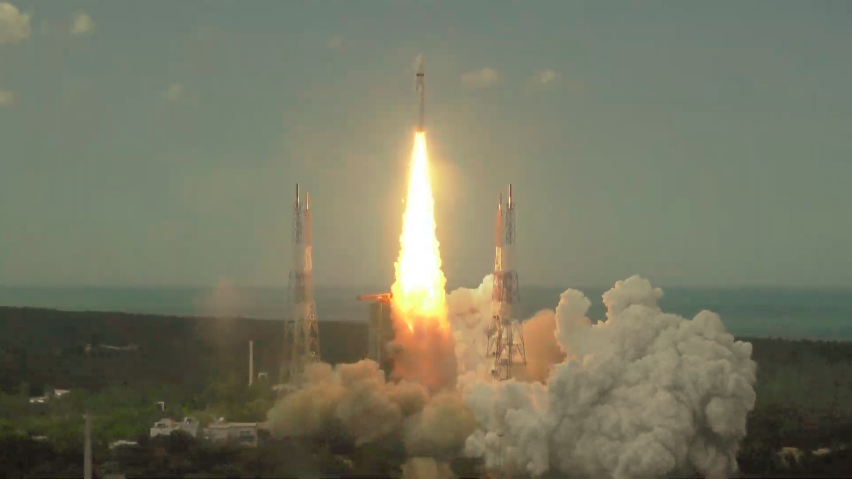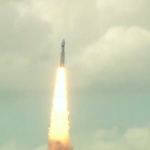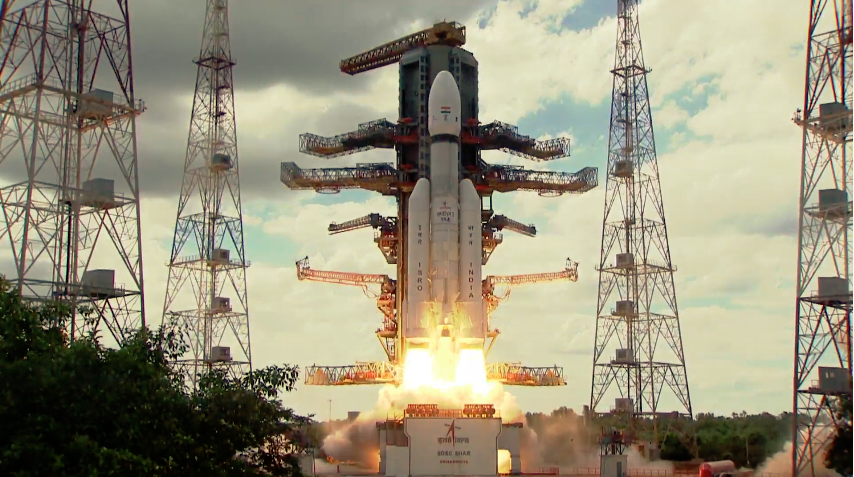
Chandrayaan-3

Sriharikota: Chandrayaan-3, India’s third lunar mission consisting of an indigenous Lander module (LM), Propulsion module (PM) and a Rover with an objective of developing and demonstrating new technologies required for Interplanetary missions, successfully embarked on its journey today on the launcher LVM3 M4. The rocket successfully placed the integrated module in an Elliptic Parking Orbit (EPO) of size ~170 x 36500 km.
The propulsion module carried the lander and rover configuration to a 100 km lunar orbit. The Lander will have the capability to soft land at a specified lunar site and deploy the Rover which will carry out in-situ chemical analysis of the lunar surface during the course of its mobility.
The propulsion module has a Spectro-polarimetry of Habitable Planet Earth (SHAPE) payload to study the spectral and Polari metric measurements of Earth from the lunar orbit.

Chandrayaan-3 was inserted into the Lunar Transfer Trajectory after the orbit-raising manoeuvres. Covering over 300,000 km, it will reach the Moon in the coming weeks. Scientific instruments onboard will study the Moon’s surface and enhance our knowledge.
Underlining the significance of the launch, Prime Minister Narendra Modi said “This remarkable mission carries the hopes and dreams of our nation”. He tweeted, “This momentous achievement is a testament to our scientists’ relentless dedication. I salute their spirit and ingenuity!”.
The mission objectives of Chandrayaan-3 are:
- To demonstrate a Safe and Soft Landing on Lunar Surface
- To demonstrate Rover roving on the moon and
- To conduct in-situ scientific experiments.
Chandrayaan-3 is a follow-on mission to Chandrayaan-2 to demonstrate end-to-end capability in safe landing and roving on the lunar surface. It consists of Lander and Rover configurations.
It may be mentioned that Chandrayaan-1 is considered to be a path breaker among global lunar missions as it confirmed the presence of water molecules on the moon. It featured in over 200 scientific publications around the world. Chandrayaan-2 was equally pathbreaking because data from the Orbiter associated with it detected the presence of chromium, manganese and sodium for the first time through remote sensing.
“Maybe in the future, it can be potentially inhabited,” Modi said.
Earlier on July 11, 2023, the Indian Space Research Organisation (ISRO) had concluded the ‘Launch Rehearsal’ simulating the entire launch preparation and process lasting 24 hours.
– global bihari bureau





